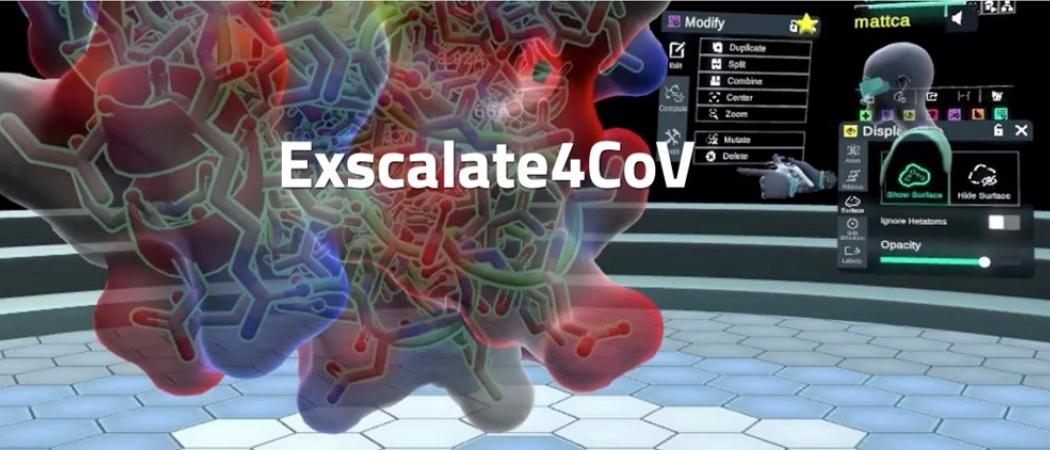A €3M EU-funded research project is pulling together a ‘drug box’ from compound libraries around Europe for rapid screening against the crystal structure of the new coronavirus in some Europe’s largest supercomputers

A research consortium funded by the European Commission has opened a “drug box” where companies and research institutes can send molecular structures from their compound libraries for screening against the 3D crystal structure of SARS-CoV-19, the virus that causes COVID-19 infections.
Exscalate4CoV, the second largest consortium backed by the commission in its emergency call for COVID-19 research, builds on the Horizon 2020 Exscalate platform, the first computer-based screening system designed specifically to find new treatments for pandemic diseases.
The value of the platform was previously demonstrated during the Zika virus epidemic of 2014 – 2016.
Based on this experience, the consortium of 18 partners in seven countries and led by the Italian pharmaceutical company Dompe farmaceutici SpA, aims to identify in silico hits to COVID-19 targets that could be developed into drugs against the virus.
Dompé worked with Politecnico di Milano and the Italian supercomputer facility CINECA in the development of Exscalate. The system now has the capability to virtually screen three million molecules per second, to find those that bind best to the most ‘druggable’ sites on the surface of the coronavirus.
Dompé itself has a virtual library of 1.2 billion molecules, but is also calling on others to submit molecular structures.
“We are launching a drug box to ask companies and research institutes to send us their compounds,” Andrea Beccari, head of Dompe’s R&D platforms and services told Science|Business.
Computer-based screening is a way to rapidly single out molecules that are good drug candidates. Exscalate will flag the compounds identified as being of interest for further development. It will then seek agreement from the owners to conduct laboratory tests on the actual compounds.
Owners will be asked to supply chemicals for these in vitro screens to be carried out. “Researchers will provide us with chemical material in agreed quantity and we will provide screening slots for those selected compounds,” Beccari said.
The Exscalate4CoV will publish results of computer simulations in a public portal such as the chemical database of the European Molecular Biology Laboratory within 30 days of screening the compounds.
In addition to testing compound libraries, the consortium will use Exscalate to assess approved drugs for their likely effectiveness against COVID-19.
A joint European effort
In addition to CINECA, Exscalate4CoV is using Germany’s Jülich and Spain’s Barcelona supercomputers. “We are trying to think of our project as a hub of competence,” said Beccari.
The hits from virtual screening will be passed on to researchers at KU Leuven for in vitro testing. “The first round of molecules are in Leuven for testing,” Beccari said.
Meanwhile, the Fraunhofer Institute for Molecular Biology and Applied Ecology will assess any existing drugs identified by the Exscalate system to uncover their mechanism of action.
"This strategy builds on our deep expertise in repurposing existing marketed drugs towards new indications”, said Philip Gribbon researcher at Fraunhofer. “We believe it holds great promise of finding an effective drug treatment for COVID-19 infection in the shortest possible timescale.”
Supercomputers speed up drug discovery
Beccari said computer simulation can dramatically limit the number of molecules that have to be tested in vitro. “We know that this approach works,” he said.
As part of the project, the consortium is working with the European Medicines Agency on expediting approvals to test any novel compounds or approved drugs in clinical trials. “We discussed [how to] to accelerate the process of evaluation of the outcome of the project,” Beccari said.
Exscalate was developed for use in response to a pandemic and according to Beccari, the EU-wide lockdown has not affected the work of the consortium, which is designed to cope with such situations.
Multiple sites have been set up for each aspect of the project. At the moment, there are two sites for screening, multiple sites for simulation and analysis, and two sites for crystallography. “The situation can change very fast,” said Beccari. “In the design of the process, we decided to be resistant.”




 A unique international forum for public research organisations and companies to connect their external engagement with strategic interests around their R&D system.
A unique international forum for public research organisations and companies to connect their external engagement with strategic interests around their R&D system.